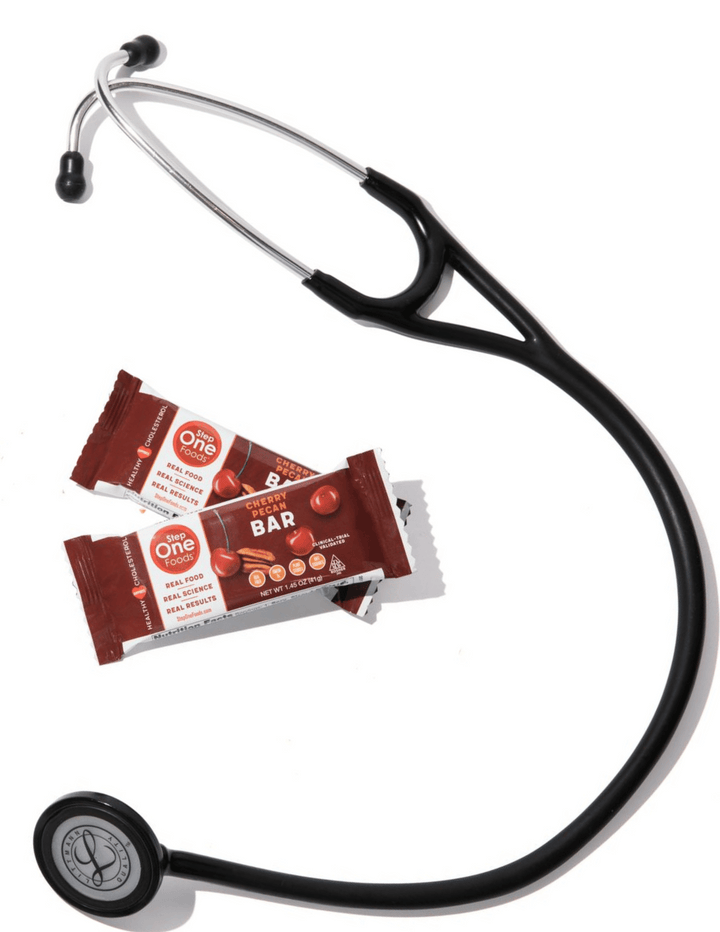The way to a child’s heart (health)? Through their stomach.

I’m an adult cardiologist, meaning I was trained to treat adults. But as I walk through an airport terminal or department store, I can’t help but notice that even children are looking less and less like pictures of health. And that’s a tragedy.
For children and teenagers, a BMI at or above the 95th percentile for age and gender indicates obesity. Those in the 85th to just under the 95th percentile are considered overweight. While BMI isn’t a perfect measure of health, it’s a useful starting point for screening, allowing doctors to recommend additional testing when necessary. Amazingly, obesity in adolescents has become a significant health issue in our country, currently affecting around 21% of U.S. teens.
Childhood obesity is more than just external appearance or a number on a scale; it’s closely linked to internal health problems like insulin resistance, high blood pressure, sleep disorders, and even depression. And as these children grow into adults, they face a much higher risk of developing conditions such as cardiovascular disease and diabetes.
We typically think of heart disease as being something that only affects middle aged and older adults. The truth is, heart disease begins in childhood. Autopsies performed on children as young as 8 have shown evidence of fatty streaks in the lining of arteries. It’s these fatty streaks that, with continued exposure to heart disease risk factors, turn into plaque and blockages over time. They can also regress completely with lifestyle change.
Adolescent obesity doesn’t happen overnight. It's often the result of several factors, including poor diet, lack of physical activity, and even genetics. Research shows that children with one or both parents who are obese are more likely to be obese themselves by the age of 15. Obviously, both nature and nurture play roles here, but most experts would favor environment as having the greater influence.
How Food Exposure Contributes to Obesity
Where children live can significantly impact their risk of obesity. In neighborhoods with limited access to healthy foods—whether urban or rural—children are at a much higher risk of becoming obese. These "food deserts" are areas where the nearest grocery store is more than a half-mile away in urban settings or over 10 miles away in rural ones. Without convenient access to fresh fruits, vegetables, and whole grains, families may turn to widely available processed foods that are high in fats and sugars.
A recent study, which followed over 28,000 children, found that those who lived in food-limited neighborhoods, either before birth or during early childhood, had a 50% higher risk of becoming obese by adolescence. The effects were long-lasting, with higher BMIs still present at ages 5, 10, and 15. This highlights a critical issue: food exposure in early life has a big impact on long-term health.
The explanation? While getting too much of what is unhealthy clearly contributes to disease, so does not getting enough of what is healthy. Fruits, vegetables and whole grains are critical to supporting the health of our microbiome - which in turn is critical to a whole host of biochemical processes from signaling satiety via GLP-1, to serotonin release affecting mood, and even insulin homeostasis affecting blood sugar control and lipid levels. Miss out on those important nutrients and risk feeling less full after any meal, experiencing less pleasure in life, and developing insulin resistance and hyperlipidemia - even in childhood. Bottom line? If your microbiome is unwell, you are too - regardless of age.
The good news is microbiome health can be improved! And the earlier you fix it the better.
Why Healthy Food Choices Matter
Increasing the volume and diversity of plant-based foods consumed can yield measurable improvements in a person’s microbiome within days. To build on that and keep the microbiome healthy, experts in the field advise consuming 30 different plants/plant-based ingredients per week. That includes fruits, vegetables, whole grains, nuts, seeds, beans and legumes.
And if getting your child or grandchild to even come close to those goals seems impossible, you should know that Step One Foods contains 20 different whole plant-based ingredients across the product line. Mix Anytime Sprinkle into store bought marinara sauce and you take plant diversity from 2 (tomatoes and onions) to 10 (tomatoes, onions, oat bran, walnuts, almonds, flax, chia, cranberries, raisins, and Saskatoon berries). Eat an Apple Cinnamon Bar and get 10 different high quality plant-based ingredients without having to cook anything. No - that’s not enough to fix it all, but it’s definitely a step in the right direction.
I started Step One Foods because what we eat has such an outsize impact on our health. Food, through its daily impact on our biochemistry and risk factors, has massive cumulative effects - and just like it can contribute to developing disease it can contribute to undoing it. And although it’s never too late to begin building health, starting young means accumulating far more of it - and enjoying far more of it - over an entire lifetime.

Tested & Proven Results.
- Cardiologist formulated
- Supported by over 500 publications
- Clinically-proven, in a double-blind randomized trial with Mayo Clinic and The University of Manitoba
80% of participants lowered their cholesterol in just 30 days. With just two servings per day, Step One Foods offers a proven-effective way to naturally lower LDL (bad) cholesterol.
Get heart health tips and articles like this, delivered right to your email.
New articles every week.
You may also like...

New Year, New You: Simple Changes for Better Heart Health in 2025

You don’t need to avoid foods with cholesterol…except for these



